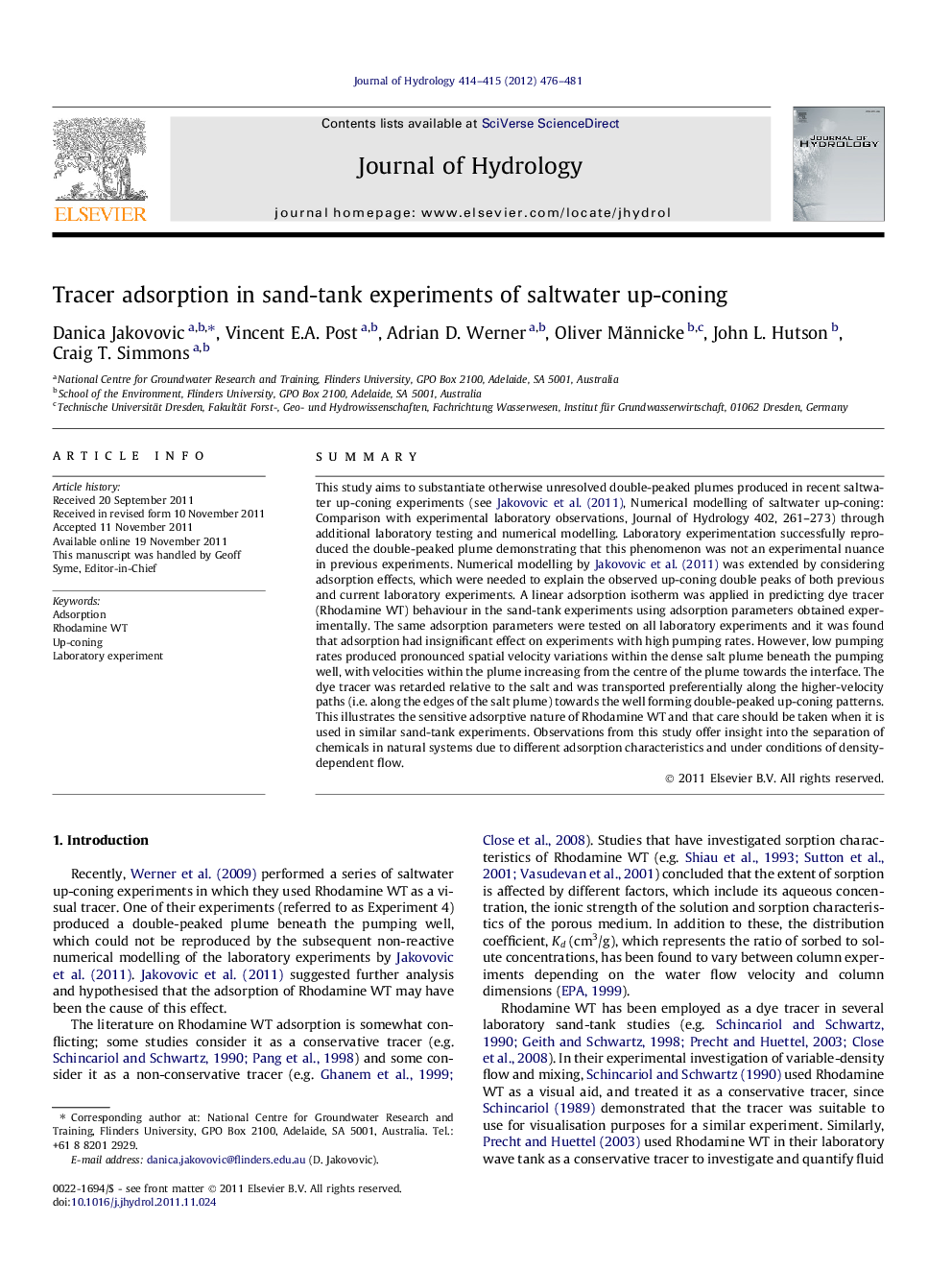| Article ID | Journal | Published Year | Pages | File Type |
|---|---|---|---|---|
| 4577246 | Journal of Hydrology | 2012 | 6 Pages |
SummaryThis study aims to substantiate otherwise unresolved double-peaked plumes produced in recent saltwater up-coning experiments (see Jakovovic et al. (2011), Numerical modelling of saltwater up-coning: Comparison with experimental laboratory observations, Journal of Hydrology 402, 261–273) through additional laboratory testing and numerical modelling. Laboratory experimentation successfully reproduced the double-peaked plume demonstrating that this phenomenon was not an experimental nuance in previous experiments. Numerical modelling by Jakovovic et al. (2011) was extended by considering adsorption effects, which were needed to explain the observed up-coning double peaks of both previous and current laboratory experiments. A linear adsorption isotherm was applied in predicting dye tracer (Rhodamine WT) behaviour in the sand-tank experiments using adsorption parameters obtained experimentally. The same adsorption parameters were tested on all laboratory experiments and it was found that adsorption had insignificant effect on experiments with high pumping rates. However, low pumping rates produced pronounced spatial velocity variations within the dense salt plume beneath the pumping well, with velocities within the plume increasing from the centre of the plume towards the interface. The dye tracer was retarded relative to the salt and was transported preferentially along the higher-velocity paths (i.e. along the edges of the salt plume) towards the well forming double-peaked up-coning patterns. This illustrates the sensitive adsorptive nature of Rhodamine WT and that care should be taken when it is used in similar sand-tank experiments. Observations from this study offer insight into the separation of chemicals in natural systems due to different adsorption characteristics and under conditions of density-dependent flow.
► Rhodamine WT adsorption produced plume patterns not reflecting conservative solutes. ► A reactive transport model revealed mechanisms that lead to the observed patterns. ► Adsorption is an important consideration when using Rhodamine WT as a visual aid.
